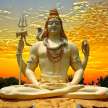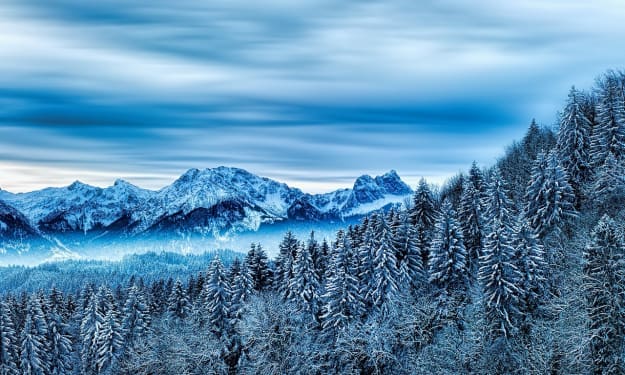
The mythology and legend surrounding Mount Kailash are profoundly ingrained in the practices and doctrines of many different religions, most notably Buddhism, Hinduism, and Jainism. Although the narrative has been told in many different ways, here is a basic synopsis of it:
Regarding Hinduism:
Lord Shiva, the god of transformation and destruction, is said to reside atop Mount Kailash. Hindu legend states that Lord Shiva, his consort Parvati, and their two children, Ganesha and Kartikeya, reside atop Mount Kailash. Lord Shiva is said to be sitting in constant meditation atop the mountain, which is said to be the center of the cosmos, watching over the cycles of creation and destruction as well as the cosmic balance.
Within Buddhism:
Kang Rinpoche, or "Precious Snow Mountain," is the beloved moniker for Mount Kailash in Tibetan Buddhism. It is revered as a place of pilgrimage and connected to a number of significant Buddhist individuals and occasions. A tradition claims that Milarepa, a disciple of the Buddha, meditated in a cave located on the mountain's slopes. In addition, the originator of the ancient Tibetan indigenous religion known as Bon is said to have received instructions atop Mount Kailash.
Within Jainism:
Mount Ashtapada, also referred to as Mount Kailash, is also significant in Jainism. The first Tirthankara, Rishabhanatha, is said to have achieved moksha (freedom) on Mount Ashtapada following a protracted spiritual quest. Additionally, it's thought to be the location of several A few other Tirthankaras attained enlightenment.
Myths & Legends:
There are numerous myths about Mount Kailash. According to a well-known Hindu tradition, Lord Vishnu asked Lord Shiva and Parvati to live atop the mountain, and that's how they did. Another mythology describes how gods and demons churned the cosmic ocean (Samudra Manthan) in order to extract the amrita, or elixir of immortality. The axis of the universe, Mount Meru, is claimed to have revolved around Mount Kailash, which served as its pivot throughout this event.
One of the most respected and enigmatic peaks in the world, the mountain's symmetrical design and remote location have fostered these legends over the centuries.
many things considered, the legend of Mount Kailash is a rich tapestry of spiritual meaning, mythological stories, and religious beliefs that has captured the interest of individuals from many backgrounds and nations.
In the Tibetan Himalayas, the Kailash Range contains the holy mountain known by several names as Kailash, Mount Kailash, or Kailasa. It is extremely important in many religions, such as Buddhism, Jainism, Bon, Hinduism, and Jainism.
The following are some of Mount Kailash's wonders and noteworthy characteristics:
Spiritual Significance: According to Hinduism, Mount Kailash is the home of Lord Shiva. It is thought to be the center of the universe, a spiritual axis that the universe orbits. While it is known as Mount Ashtapada in Jainism and is connected to the first Tirthankara, Rishabhanatha, it is regarded as Kang Rinpoche in Buddhism.
Physical characteristics: Rising to a height of 6,638 meters (21,778 feet), Mount Kailash is a towering sight in the Transhimalaya range, situated close to the Indus, Brahmaputra, Sutlej, and Karnali rivers, some of Asia's longest rivers.
Site of Pilgrimage: In a custom known as kora or parikrama, pilgrims walk around the peak. This means walking around the mountain's base, which is a 52-kilometer (32-mile) excursion that can take several days to do because of the difficult terrain and high altitude.
Natural Beauty: The breathtaking scenery that surrounds Mount Kailash includes immaculate lakes like Lake Manasarovar, which is revered in Buddhism and Hinduism for its purifying qualities.
Mysteries and Legends: There are a lot of myths and legends concerning the formation of the mountain and its spiritual importance. Its secluded setting and symmetrical shape contribute to its allure.
Difficult Climbs: Although Mount Kailash holds great spiritual importance, it is not an often climbed peak. Climbers are discouraged by the difficult terrain as well as by religious concerns. There have been a few attempts, though, with a group of Chinese climbers recording the first successful ascent in 1985.
Unusual Geological Formation: Amid the rough terrain of the Tibetan Plateau, Mount Kailash is renowned for its unusual geological features, such as its remarkably symmetrical peak.
Cultural Heritage: Mount Kailash's reputation as a symbol of transcendence and spiritual ambition has been further cemented by the innumerable literary, musical, and artistic creations it has inspired throughout the world's traditions and cultures.
All things considered, Mount Kailash is not just a natural wonder but also a profoundly spiritual and cultural symbol that attracts both pilgrims and adventurers with its overwhelming presence.






Comments
There are no comments for this story
Be the first to respond and start the conversation.